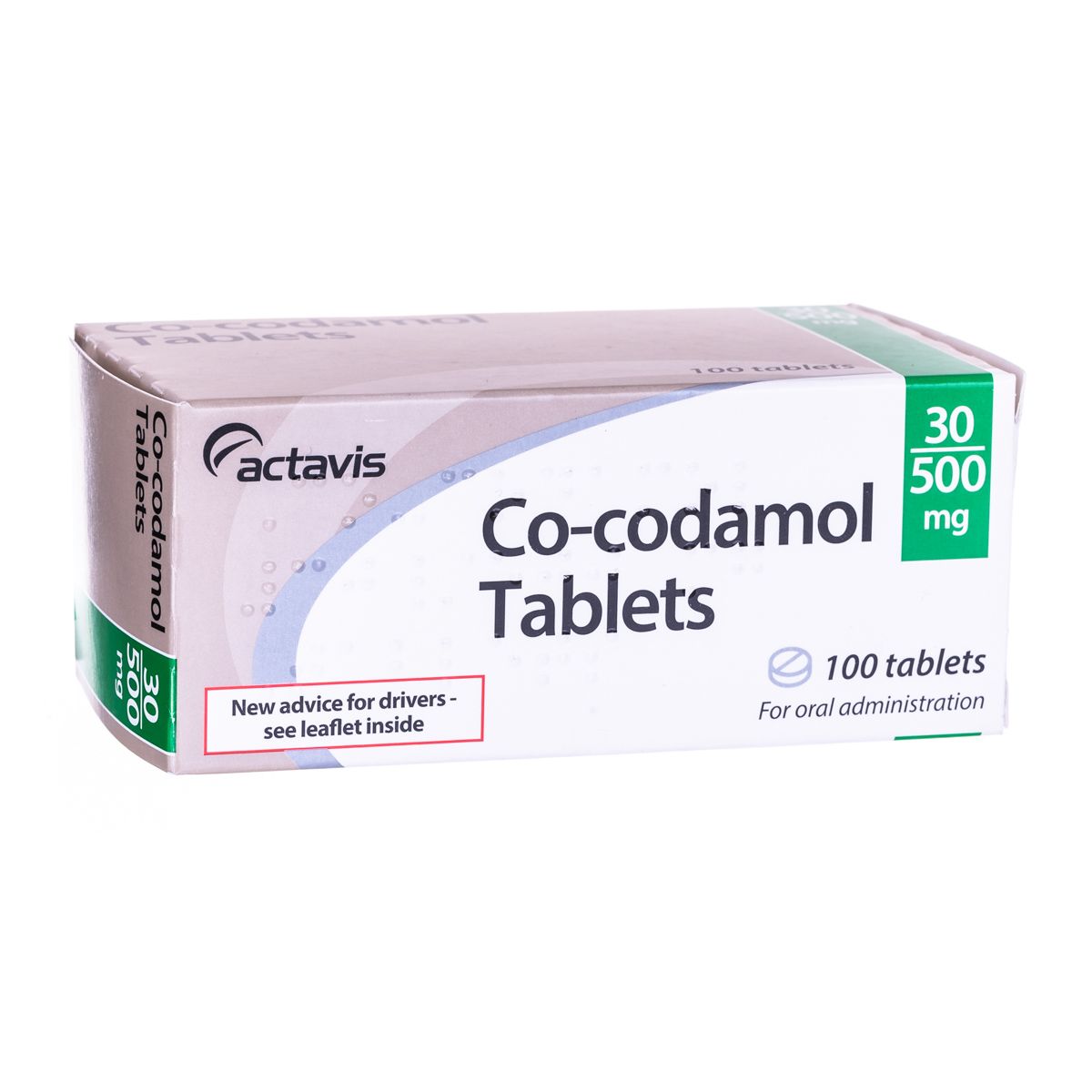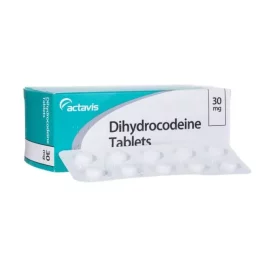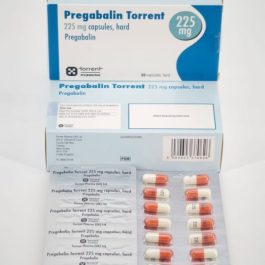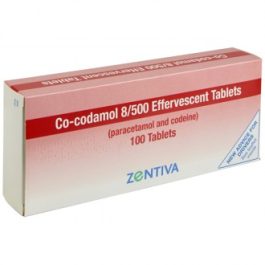Buy Co-Codamol
What is Co-codamol?
Co-codamol is a painkiller. Co-codamol is a combination of 2 different classes of painkillers – paracetamol and codeine. Paracetamol is classed under aniline analgesics, although it is grouped under NSAID, due to the poor anti-inflammatory effect it’s not considered an NSAID. Codeine comes under the opioid analgesics. Codeine, first isolated in 1832. Codeine is utilized as a central analgesic, sedative, hypnotic, antinociceptive, and antiperistatical agent, and is also as a cough suppressant. Co-codamol is indicated in adults and children older than 12 years of age. Co-codamol used to treat headaches, muscular pain, painful menstruation migraines, and toothache. Co-codamol can be used as an alternative drug to less potent painkillers, such as aspirin, ibuprofen, which have not worked. Co-codamol is the generic term for medicines sold under the brand names Atasol in the US/Canada, Solpadeine Plus in the UK (manufactured by CHURCH & DWIGHT CANADA CORP, Omega Pharma Ltd). Other brands available are Solpadol, katakana. Buy Co-codamol online and have delivered overnight at Just-pills.com.
Co-codamol is available In many countries in the European Union like Bulgaria, Cyprus, Denmark, Estonia, France, Ireland, Latvia, Lithuania, Malta, Poland, Romania, as an over the counter drug.
Co-codamol is available as over the counter for lower doses (8mg codeine/500mg paracetamol) in the UK but one should need a prescription to buy the drug of higher doses. In countries like Australia, the US, United States, Japan, and the United Arab Emirates banned the sale of medicines containing codeine as over-the-counter (OTC) medicines.
Co-codamol is available online with a prescription. You can buy Co-codamol in the US, UK, Canada, and India with an online prescription.
Co-codamol comes as a tablet, capsule, and oral suspension. Co-codamol tablets and capsules are mostly available in 3 different strengths. They contain 8mg, 15mg, or 30mg of codeine. All 3 strengths have 500mg of paracetamol as a constant dose.
Co-codamol is not indicated in some people who are having certain medical conditions. It is important to inform your doctor before starting the medicine if you have lung problems or breathing difficulties, head injury, raised intracranial pressure, adrenal gland problems, a condition that causes fits or seizures, drinking more than the maximum recommended amount of alcohol (14 units a week), pregnant or is breastfeeding or those planning for pregnancy, liver problems, you may need to take a lower dose, are under 18 years old and have had your tonsils or adenoids removed because of a sleep problem called obstructive sleep apnoea.
Drug interactions affect how the medications would work. It may increase your risk and enhance side effects in more serious condition. Keep a list of all the products you use (including prescription/nonprescription drugs and herbal products) and share it with your doctor and pharmacist. Do not start, stop, or change the dosage of any medicines without your doctor’s approval.
Co-codamol interacts with Medicines used to thin the blood such as warfarin may increase the risk of bleeding, Chloramphenicol – an antibiotic used for infections, Metoclopramide or domperidone – used to relieve nausea and vomiting feeling), Cholestyramine – for lowering blood cholesterol levels, oral contraceptive pill, Increases CNS depression with CNS depressants (eg. Anxiolytics, Hypnotics, Antipsychotics). Co-codamol makes u feel sleepy or dizzy which may cause a lack of concentration in activities such as driving and machinery works.
The most common side effects of Codeine include constipation, feeling dizzy, drowsiness, constipation, nausea, vomiting, and stomach pain.
Co-codamol is known to cause an undesirable effect on regular prolonged use of codeine such as addiction and tolerance. Prolonged use of a painkiller for headaches can make them worse so it is better to take a doctor’s advice rather than self-medicate.
Drug withdrawal symptoms such as feeling restless, agitated, anxious or nervous, panic attacks, difficulty sleeping, shaking, ringing in your ears might happen on sudden cessation of therapy or dose reduction. When a patient needs to stop the therapy, it is advisable to taper the dose as per the physician’s advice.
Recognize the signs and symptoms of a possible co-codamol overdose. Paracetamol overdose causes sweating, pallor, nausea, vomiting, anorexia, and abdominal pain. Liver damage may become significant in 12 to 48 hours.
1 in 100 people may get serious side effects which are very rare to happen. Activated charcoal is used for the treatment if someone is suspected of an overdose within the first 1 hour. To administer an antidote it’s important to measure the plasma paracetamol concentration. Plasma paracetamol concentration should be measured at 4 hours or later after. Treatment with N-acetylcysteine may be used up to 24 hours after the ingestion of paracetamol, however, the maximum protective effect is obtained up to 8 hours post-ingestion. The effectiveness of the antidote decreases tremendously after this time.
It’s safe to take co-codamol with ibuprofen and aspirin but it is advised not to take co-codamol with paracetamol, or other medicines that contain paracetamol. Co-codamol already contains paracetamol so you could be at risk of paracetamol overdose.
Overdose of codeine can cause central nervous system depression, including respiratory depression, extreme somnolence progressing to stupor or coma, skeletal muscle flaccidity, cold and clammy skin.
The triad of coma, pinpoint pupils and respiratory depression is considered indicative of opioid overdosage with dilation of the pupils occurring as hypoxia develops. Nausea and vomiting are common. Other opioid overdose symptoms include hypothermia, confusion, convulsions, severe dizziness, severe drowsiness, hypotension and tachycardia (possible but unlikely), nervousness or restlessness, excitement, hallucinations, bradycardia, hypotension, circulatory failure, slow or troubled breathing, severe weakness, convulsions, especially in infants and children. In severe overdose with codeine, apnoea, circulatory collapse, cardiac arrest and even death may occur. If you see someone who has been overdosed with co-codamol, within the first hour of intake activated charcoal should be given, naloxone (which is an antagonist medicine that works against and normalizes the adverse action of codeine) should be administered if respiratory depression is evident.
Paracetamol is almost completely absorbed from the intestine. The concentration of the drug will achieve its peak level in 30-60 minutes. Paracetamol will be uniformly distributed throughout most body fluids, plasma.
Codeine phosphate is well absorbed after oral intake and is widely distributed. About three fourth of the drug is excreted in the urine in 24 hours.
Co-codamol tablets are white to off-white round tablets and capsules. Each tablet contains codeine phosphate variable dose and 500mg of paracetamol. The other ingredients are maize starch, povidone, potassium sorbate, microcrystalline cellulose, stearic acid, magnesium stearate, talc, pregelatinized starch, and purified water.
Keep all medicines out of the reach and sight of children. Store in a cool, dry place, away from direct heat and light.
How does it work?
Codeine is a pain killer and cough suppressant similar to morphine and hydrocodone. The oral bioavailability of codeine is 50%. Meaning, up to 50 % of the drug reaches the blood circulation of taken orally. About 10% is metabolized to morphine and the rest is metabolized to inactive compounds. The small amount of codeine that is converted to morphine in the body mimics the body’s natural painkillers, endorphins. They control pain by blocking pain messages to the brain. Like morphine, codeine produces their actions at a cellular level by activating opioid receptors (receptors in the central nervous system and brain that reduce pain). These receptors are distributed throughout the central nervous system (CNS) codeine binds to receptors in the brain (opioid receptors) that are important for transmitting the sensation of pain throughout the body and brain. Codeine increases tolerance to pain. Although it reduces pain, codeine also causes sedation, drowsiness, and depressed breathing. Codeine frequently is combined with paracetamol for more effective pain relief.
Paracetamol has a similar mechanism of action as aspirin. It has weak anti-inflammatory action. The mechanism of action is not that clear Paracetamol believed to have its action by inhibition of prostaglandin synthesis in the brain (Prostaglandins make nerves more sensitive, make you feel pain). Paracetamol works by blocking chemical signals in the brain that makes up feel the pain which re collectively called as prostaglandins. It also controls the body temperature by influencing these chemical messengers.
Benefits of Co-codamol.
Co-codamol is a combination of codeine and paracetamol that gives a synergistic effect in providing better pain relief. Co-codamol can be used for mild to moderate pain co-codamol single dose can give the effect for 4 to 6 hours. Codeine is commonly used to provide postoperative pain relief in children. Codeine is still used for postoperative pain relief after neurosurgical procedures, although morphine is more potent. This is because codeine causes less sedation and respiratory depression (ineffective slow breathing) than morphine. Co-codamol has no dietary restrictions and rapidly absorbed from the intestine. Codeine 60mg has the same pain-relieving effect as 600mg aspirin. Codeine 100mg has equivalent pain reliving effect of10mg morphine. It is safe to take co-codamol but not with other NSAIDS like ibuprofen or naproxen without consulting a doctor especially in patients who take Aspirin daily to lower the risk of heart attack, clot-related strokes, and other blood flow problems in patients who have cardiovascular disease or heart attack or stroke.
Paracetamol is considered to be a much safer drug in comparison to other NSAIDs. Paracetamol and aspirin are said to be equally effective in relieving pain after minor surgical procedures such as extraction of the third molar.
How to take it?
Before starting the treatment with opioids thorough discussion should be held with the physician to avoid the risk of addiction and drug withdrawal syndrome.
Codeine comes as a tablet, capsule, and an oral suspension form to take by mouth.
Swallow the tablet or capsule with a full glass of water (8 ounces or 240 milliliters). You should not lie down for at least 10 minutes after taking Codeine. If you have a vomiting sensation it’s advised to take codeine with food. It has to be taken as recommended by the physician. Usually, one tablet of codeine 8mg and paracetamol 500mg every 4 to 6 hours when necessary up to a maximum dose of 8 tablets in any 24 hours without exceeding 2 tablets at a time depending on the condition. You can take co-codamol either before or after food, but taking the drug after food can help prevent feelings of dizziness/discomfort which can occur with the first few doses.
Do not take for more than 3 days without consulting your doctor. For adults, one to two tablets every four hours is recommended as required. Maximum of eight tablets daily. It is advised that Codeine should not be used in children below the age of 12 years because of the risk of opioid toxicity due to the variable and unpredictable metabolism of codeine to morphine. Pediatric patients who are aged between 12 and 15 need to take one tablet every six hours as required, up to a maximum of four tablets in any 24-hour period. For adult patients and children who are aged between 15 and 18 need to take one tablet every four to six hours as required, up to a maximum of eight tablets in any 24-hour period. For elderly patients, the dose should not be repeated more frequently than every 4 hours and the doses should be taken as per the instructions of the physician.
The duration of treatment with co-codamol should not be extended beyond three days and if no effective pain relief is achieved then patients should take necessary advice from their physician. If you missed a dose of co-codamol take the missed dose as soon as you remember it. However, if it is almost time for the next dose, skip the missed dose and continue the regular dosing schedule. Do not take a double dose to make up for a missed one. Although effective at controlling pain, use of co-codamol can be associated with certain risks and one who is taking it or the bystander should be well aware of the same.





